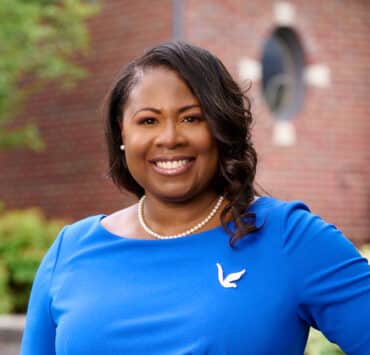|
Getting your Trinity Audio player ready... |
Insulin was discovered and made available about a hundred years ago. Before that pivotal moment, diabetes patients faced high mortality rates. Since then, further scientific, medical, and technological breakthroughs have improved the outlook for people living with Type 1 and Type 2 diabetes. LifeScan has emerged as a world leader in blood glucose monitoring and has a long history of introducing new products and solutions that advance glucose management and diabetes care. Ehab Goldstein, the company’s global vice president of strategic insights and customer care, says the projects LifeScan has in the pipeline will continue to improve outcomes and change lives.
“We’re using the latest technology to create transformative solutions that live within the patient’s journey. This is a big contrast to the past, when diabetes management posed too many limits for patients,” he says.
Portable glucose monitors made their way into American homes in the 1980s. Then, through medical technology innovation, came insulin delivery systems, including syringes, pumps, and pens designed to help keep blood sugar within healthy ranges. While these options brought more flexibility to patients’ lives, those patients still had to manually track blood sugar levels.
Most people were left with inconvenient and inconsistent manual recordings of blood glucose data, and had to try to interpret what they meant and how they should react. In short, diabetes management was inconvenient. Goldstein and the LifeScan team are looking to change that.
“We’re using the latest technology to create transformative solutions that live within the patient’s journey. This is a big contrast to the past, when diabetes management posed too many limits for patients.”
Ehab Goldstein
In many ways, they already have. Twenty million people worldwide now use the company’s efficient and intuitive monitors, test strips, and smartphone apps to monitor glucose levels, understand if results are in their own personal range, and seamlessly share the data with healthcare providers.
Additionally, LifeScan recently launched OneTouch Solutions, offering wellness programs from experts like Noom, Fitbit, Cecelia Health, and Welldoc that can be paired with glucose data from connected OneTouch meters, all accessible across one platform. For example, the OneTouch partnership with Fitbit gives users a more complete view of how lifestyle factors like daily activity, nutrition, and sleep can impact a user’s blood glucose levels.
The collaboration with Noom gives users access to psychology-based nutrition education, tools, and coaching to help people with Type 2 diabetes adopt healthier habits, lose weight, and improve blood glucose control.
With these solutions in place, Ehab Goldstein is ready to help LifeScan take its offerings to the next level. “We are transforming from a company that provides great tools to one that builds ecosystems to deliver personalized care,” he explains. Goldstein pictures a day in the not-too-distant future in which advanced sensors, AI, 5G, and cloud technologies can significantly simplify and personalize diabetes management to drive better outcomes.
“We are transforming from a company that provides great tools to one that builds ecosystems to deliver personalized care.”
Ehab Goldstein
Goldstein’s colleagues outside the company are also excited about his vision. “We are so grateful for our long-term partnership with LifeScan and applaud Ehab for his vision and continued commitment to planning and implementing strategic transformations and enhancing the customer experience,” says Tina Paton, account management director for Sitel Group.
LifeScan is continuing its evolution, and Goldstein has been charged with leading a customer care and customer experience team that handles more than one million customer contacts per year. He’s implemented new measures to turn a hub for troubleshooting device problems into a competitive advantage. How? By using AI to extract deep customer experience insights, then empowering marketing, product, shopping, and service teams so LifeScan health solutions work alongside patients for every step of their journey. Goldstein aims to elevate the LifeScan customer experience to differentiate the brand and make it the preferred choice for all people with diabetes, inspired by success models from Zappos, Amazon, and others.
Ehab Goldstein also can relate to Apple’s famous “think different” slogan and has long been passionate about pursuing innovation and creating solutions that solve patient problems at scale. He was born and raised in the country of Jordan. After immigrating to the US, Goldstein studied biomedical engineering at Harvard before finishing a Harvard-MIT joint PhD program in biomedical engineering and biosciences technology.
His graduation project involved creating voice replacement device prototypes. He codesigned and implemented an electromyographically controlled electrolarynx to give patients hands-free control with dynamic pitch modulation. Put simply, it’s a wearable device that transforms neck muscle activity into a more natural-sounding artificial voice.
“With advances in cloud-based technologies, artificial intelligence, machine learning, 5G connectivity, and even quantum computing, the possibilities are endless.”
Ehab Goldstein
The desire to move from small-scale experimentation to large-scale impact on patients’ quality of life led Goldstein from academia to industry. He spent two years in consulting before moving to Johnson & Johnson, where he developed and launched products for more than thirteen years. LifeScan operated as part of J&J until its divestiture in 2018.
Throughout its history, LifeScan has led in many areas of diabetes management. Over the years, its improved tools and solutions have cut testing and monitoring time from minutes to seconds, made it easier to understand test results through color, and streamlined the sharing of those results with care team members.
In 2022, the company released study results that showed improved glycemic control in people with diabetes who use smart blood glucose meters coupled with LifeScan’s mobile app. Using the OneTouch Verio Reflect meter along with the OneTouch Reveal app brought significant benefits. Patients who spent eleven to twenty minutes per week using the app improved glucose readings and reduced hyperglycemic events.
Ehab Goldstein looks forward to more progress for LifeScan and people with diabetes across the globe. “I’m excited for medtech in general,” he says. “With advances in cloud-based technologies, artificial intelligence, machine learning, 5G connectivity, and even quantum computing, the possibilities are endless.”

